I. Olmec Civilization--the first great civilization of the Americas (that archeologists know about, anyway).
1. Located in the narrow “waist” of Mexico, recognizable civilization by about 1800 BCE.
2.Lived in towns and cities centered on temple mounds that they built. Created large stone heads with helmets, many over six feet tall, that are vaguely African in appearence and have sparked speculations that African peoples may have made contact with them.
3.Olmec practiced human sacrifice (as did the God of Abraham)
4.Intellectual feats--invented a dozen different systems of writing, tracked the orbits of planets, created a 365-day calendar (much more accurate than any used in Europe to the adoption of the Gregorian calendar), and wrote down their histories in accordian-folded books made of fig tree bark. Olmec scholars also invented the concept of zero, which didn’t appear in Europe until the 12th century (1100s)
II. Classic-Era Culture and Society in Mesoamerica, 200-900
A. Teotihuacan--was located about 30 miles northeast of modern Mexico City. It existed between the years 100 to 750, and at its height of power was home to more than 150,000 people--as large as some of the largest cities in Europe and Asia
1. The Role of Religion--The people of Teotihuacan recognized and worshiped many gods and lesser spirits, but the three main gods were the Sun and Moon and Quetzalcoatl, the feathered serpent, god of agriculture and the arts. Murals left indicate that these people also worshiped a storm god called Tlaloc and a female fertility god..
a. Human sacrifice--like the Olmec before them, the Teotihuacan people practiced human sacrifice. These people probably saw human sacrifice as a duty to appease their gods, and believed that it was essential to ensuring the well-being of their society.
2. Agriculture--the elites in Teotihuacan controlled the farmers in the rural areas surrounding the city. Scholars believe this came about from the after-effects of a volcanic eruption, when farmers fled the countryside for the safety of the nearby city. Approximately two-thirds of the city remained agricultural workers, walking from the city out the to fields, and then returning to the city in the evening.
a. Religion and the city--elites were able to control the rural population because of the religious power and symbolism of their city. Teotihuacan was the center of religious practice, and the worship and appeasement of the gods kept order in society.
b. Chinampas--the Teotihuacans developed an early method of hydroponic farming, where they wove together reeds, dredged muck from lake bottoms, anchored it to shore, and were able to grow food year round, because it was resistant to frost. In this way the Teotihuacans were able to support a growing population.
3. Decline and collapse--It is unclear what exactly cause the Teotihuacan society to collapse, but we do know that by the year 500 the population of the city had declined to about 40,000, and those who were left had built defensive walls around the city, an indication that there were threats from the countryside. Pictorial evidence suggests that elites mismanaged resources, and in the societal strife that followed, various factions broke off and fought amongst themselves. The most important temples were burned, and religious images defaced. By the year 750, the collapse was complete
B. The Maya--occupied the territory that now makes up Guatemala, Honduras, Belize, and southern Mexico. Although the Maya shared a single culture, they were never one unified state; instead, rival kingdoms ruled by hereditary elites fought each other for regional dominance--much like Mycenaean-era Greeks. The Yucatan Peninsula, where most of the Mayan cities were located, was ill-suited to support a large population, since only a thin layer of soil covers a strata of porous limestone. The abundance of rainfall quickly passes through the soil, and into limestone caverns, where it quickly becomes undrinkable.
1. City of Kaan--the discovery of the City of the Snake, which covered as much as 25 miles and contained thousands of buildings, alterred the perception of Mayan civilization.
a.) By the year 2000, archeologists uncovered evidence that Kaan was involved in a devastating war that lasted more than a century, and which contributed to its downfall.
2. Mayan civilization was one of the world’s most intellectually sophisticated cultures; developed written language, science, math (invention of zero).
3. Mayans inhabited land that was poorly suited to intensive agriculture, but at the height of their civilization supported a population of upwards of a million people.
a.) Prolonged drought and war decimated the population; archeologists discovered that at the end, priest were inscribing gibberish on stone tablets--they appeared to have lost knowledge of literacy, but still attempted to follow their cultural function.
C. Toltec civilization--occupied the mile-high basin that Mexico City now sits on; their military expertise allowed them to defeat and subjugate most of their enemies. Aztecs believed that Toltecs created everything that contributed to the development of their civilization, although we know that the Toltecs borrowed heavily from the civilizations that preceded them/
1. Internal strife--including allegations of drunkeness and incest--led to the king leaving with a few followers, promising to return. He appears to have set up shop instead in the weakened Mayan sphere, and established a semi-Toltec fiefdom. But his promise to return was portentous for the Aztec civilization that followed.
D. Aztec civilization--what we usually call Aztec is actually an alliance of three native peoples living in city-states around a large lake that was near present-day Mexico City, known as the Triple Alliance. Although this implies an equal share of the rule, in fact it was a very unequal partnership. The rulers in Tlacopan received one-fifth of the tribute, those in Nezahialcoyot received two-fifths, and the Mexica of Tenochtitlan received two-fifths.
1. Mexica people--arrived in the Valley of Mexico in the 12th century (1100s), and served as vassals of the people already living there. Feeling ill-treated, they made alliances with the aforementioned two other groups, and were able to overcome the Toltecs.
2. Usual practice of conquerers in the Valley of Mexico was to destroy the history of the conquered people; the Mexica went a step further and destroyed their own history so that they could re-invent themselves as a people of destiny.
3. Tlacaclel--when the Aztecs came to power, Tlacaclel believed the Mexica were destined for greatness, and was the principle developer of the ideology that the Mexica were responsible for maintaining order in the cosmos (meaning the daily rising of the sun)--but that this order could only be maintained by ritual human sacrifice.
4. Warfare--was the means of maintaining a steady flow of sacrificial victims. Mexica military technique was the mano a mano face-off, and the victims were usually beaten into submission--then taken into the victor’s home, and treated like family until sacrifice time. Warfare for native peoples was a means of displaying manhood, rather than killing one’s enemies.
5. Tenochtlitan, the capital of the Mexica, was far cleaner than its European counterparts--and far larger, as well; it probably was home to over 100,000 people by 1520. It had a large workforce to remove garbage, etc., and a sewer system to remove human waste (in Europe, they simply threw it into the streets, where it mixed with animal waste and garbage). But this system was teetering on the brink of collapse even before the Spanish showed up.
6.Vassal states--the ruling hand of Aztecs was rather heavy, with tribute and the constant threat of warfare to gain sacrificial victims, so when someone showed up promising to upset the balance of power, their were plenty of eager allies.
III. Northern Peoples
A Southwestern Desert Cultures--Around 300 B.C.E. in what is today Arizona, contacts with people living in Mexico led to the introduction of agriculture based on irrigation and maize. Irrigation allowed the planting of two crops every year, the population grew and villages appeared. The Hohokam, who settled in the Salt and Gila River Valleys (around present-day Phoenix), showed the strongest Mexican influence, incorporating many cultural artifacts from Mexico into their own daily life.
1. Anasazi--used to identify a number of dispersed, but similar, desert cultures in the Four Corners region of the present-day states of Arizona, New Mexico, Colorado, and Utah. With irrigation, they grew maize, beans, and squash, as well as cotton, into which they made cloth. After 900, these people lived in multi-story residential and ritual centers (which was why they were called "Pueblos" by the Spanish), incorporating connected residences and kivas.
B. Mound Builders: Hopewell and Mississippian Cultures--natives that lived in the fertile bottom land along the Ohio River and, eventually theMississippi River, near present-day St. Louis, but impacting an area reaching from southern Minnesota to central Alabama.
1. Hopewell--Hopewell towns in the Ohio River Valley had several thousand inhabitants and served as ceremonial and political centers. Large mounds were built to house burials and serve as platforms for religious rituals. Often, these mounds were shaped to resemble creatures the people held sacred, and reflect sunrise and moonrise patters. People living in these towns relied manly on hunting and gathering, with little agriculture--which restricted their size, of course. We are not sure what caused their decline, but the abandoment of major sites around 400 signalled that the decline took place.
2. Mississippian Culture--Cahokia at its apex supported upwards of 15,000 to 60,000 people. By c.1400, workers at the settlement had denuded the immediate area of trees for various building projects, which removed the means of preventing erosion during sometimes severe midwestern thunderstorms. Flooding and erosion during critical growing times meant the loss of the maize crop, and led to the destruction of the civilization
2. While at its apex, Cahokia was a major trade center, a place of exchange between the plains and the woodlands with the gulf coast--and even beyond, into present-day Mexico.
3. Was Cahokia a civilization?--Cahokia was not filled with tradesmen, as we usually picture a city being; however, being the first city-like entity north of the Rio Grande River, they had no idea of what a city was.
III. Andean Civilization, 200-1500
A. Chavin Civilization--by the time of the Chavin, enormous environmental challenges had been overcome to allow human civilization to exist. People had learned to effectively fish the rich source off-shore, and to deal with the lack of rain with irrigation--and to grow food in the mountains, even though there was a danger of frost between 250-300 days each year. This required an accurate calendar and the domestication of frost-resistant varieties of potatoes and grains.
1. Ayllu--the clan, which was the foundation of Andean achievement. The ayllu members thought of each other as brother and sister, and were obligated to assist one another to accomplish tasks that a single family could not accomplish on their own.
2. Mit'a--with the formation of territorial states ruled by hereditary aristocracies and kings after 1000, the obligations of the ayllu were extended to the mit'a, a rotational labor draft that performed work in the fields, herded llama and alpaca for religious establishiments, the aristocracy, and the royal court, and well as construction of roads, public buildings, irrigation and drainage projects. They also made textiles and beer made from maize and coca (Loko One?)
B. Moche--Around 200, some four centuries after the collapse of the Chavin, the Moche developed the cultural and political tools needed to dominate the north coastal region of Peru. The did not establish a formal empire or create unified political structures, but they did exercise authority over a broad region.
1. Moche social order--evidence indicated that the Moche cultivated maize, quinoa, beans, manioc, and sweet potoatoes with the aid of massive irrigation works that the Moche rulers forced commoners and subject peoples to build and maintain. Moche society was highly stratified, with the elite constructing their dwellings on platforms so that they literally looked down on commoners, enhancing their position in society.
2. Environment crisis and decline--the archaeological record makes clear that the rapid decline of Moche civilization was spurred by a succession of natural disasters in the sixth century, including a 30 year drought which expanded the area of costal dunes and clogged the irrigation system. Coupled with the development of a new military power to their immediate south, the Moche were never able to recover.
C. Tiwanaku and Wari--Tiwanaku developed near Lake Titicaca; modern excavations indicate that a vast drainage project undertaken was able to reclaim nearly 200,000 acres of lake bottom land for agriculture, and this allowed them to support a population of upwards of 30,000 12,500 feet above sea level (about 4 miles).
1. Tiwanaku social structure--it is clear that Tiwanaku was a highly stratified society ruled by a hereditary elite that controlled a large, disciplined labor force in the surrounding region
2. Wari--located about 450 miles northwest of Tiwanaku, the Wari shared many elements of their culture, but the relationship between the two remains obscure. Some scholars maintain that Wari was a dependency of Tiwanaku, while others suggest they were joint capitals of a single empire. What is clear from the evidence in the lack of cut stone masonry in public an private buildings is that the Wari elite were either weaker than their Tiwanaku counterparts, or they lacked the necesarry skill.
3. Eclispe of Tiwanaku and Wari--a time of increased warfare throughout the Andes around 1000 led to the downfall of both the Tiwanaku and Wari, and their replacement by the Inca.
B. Inca civilization
1. The Inca Empire--was the largest empire in the world during its time, stretching nearly the entire west coast of South America; much of the empire was contained within the Andes Mountains, at heights were sustaining civilization is very difficult.
2. Inca reign--lasted just over one hundred years before its demise at the hands of Francisco Pizzaro; but as we shall see, like his cousin Cortez, he lucked into attacking an empire that was suffering from internal difficulties that contributed to its downfall.
3. Rise of the Inca--Inca was the name for the people, as well as incorporated into the name of the ruler.
a.) Originated near Lake Titicaca, in the Andes along the border of present-day Peru and Bolivia. Move then to area near Cusco (or Qosqo)
b.) Inca made enemies of the Chanka people, were suppose to be led into battle by Wiraqocha Inca and his designated heir (the Inca named their successors), Inca Urqon. The fled the Chanka, however, and the Incas were led into battle by the youngest son, Inca Cusi Yupaki, who led them to victory. After being tipped off to his father’s plans to have him murdered, Yupaki foiled the plot, and his humiliated father fled. Yupaki then renamed himself Pachakuti (“Worldshaker”) in Runa Sumi, the Inkan language.
c.) The Hegemonic Empire--Pachakuti formed his empire largely by persuading other peoples to adopt Inca ways of life and Inka protections; then co-opting local rulers to do his bidding.
d.) Succession problems--naming the successor worked as long as it was a decisive decision--and the person named outlived the Inka. By the early 1500s, to successive ascensions to the throne were contested, setting off small civil wars in Inkan society; the second was only resolved just before the appearance of Pizzaro.
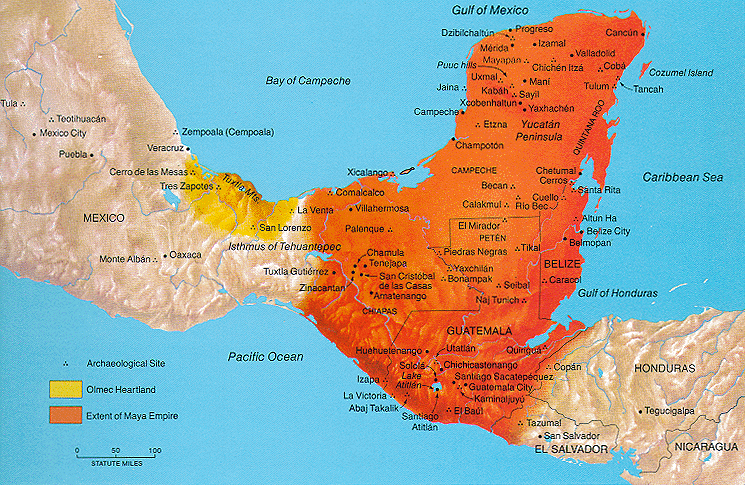
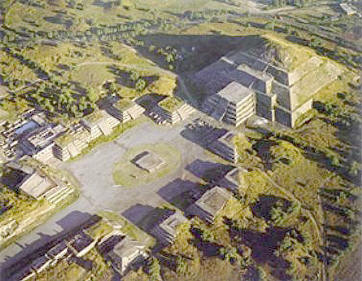






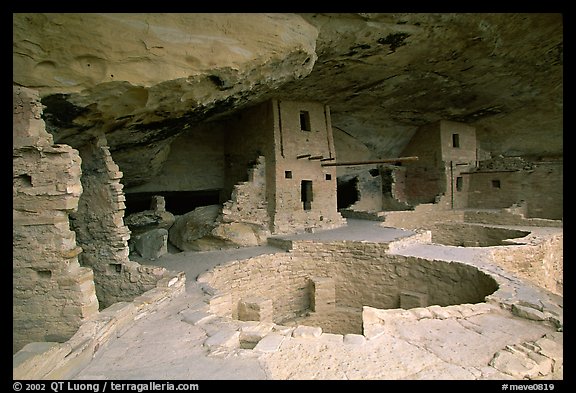

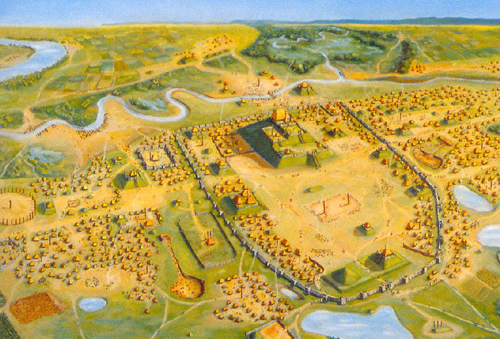
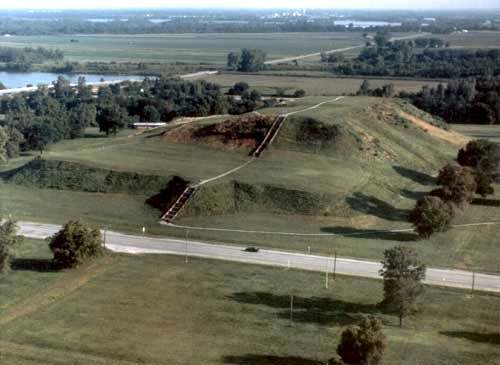




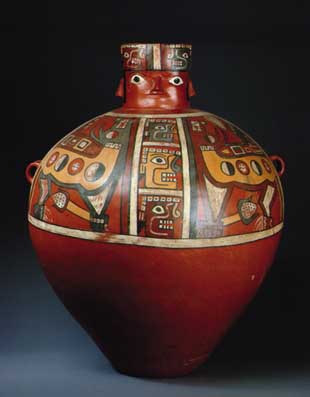

No comments:
Post a Comment